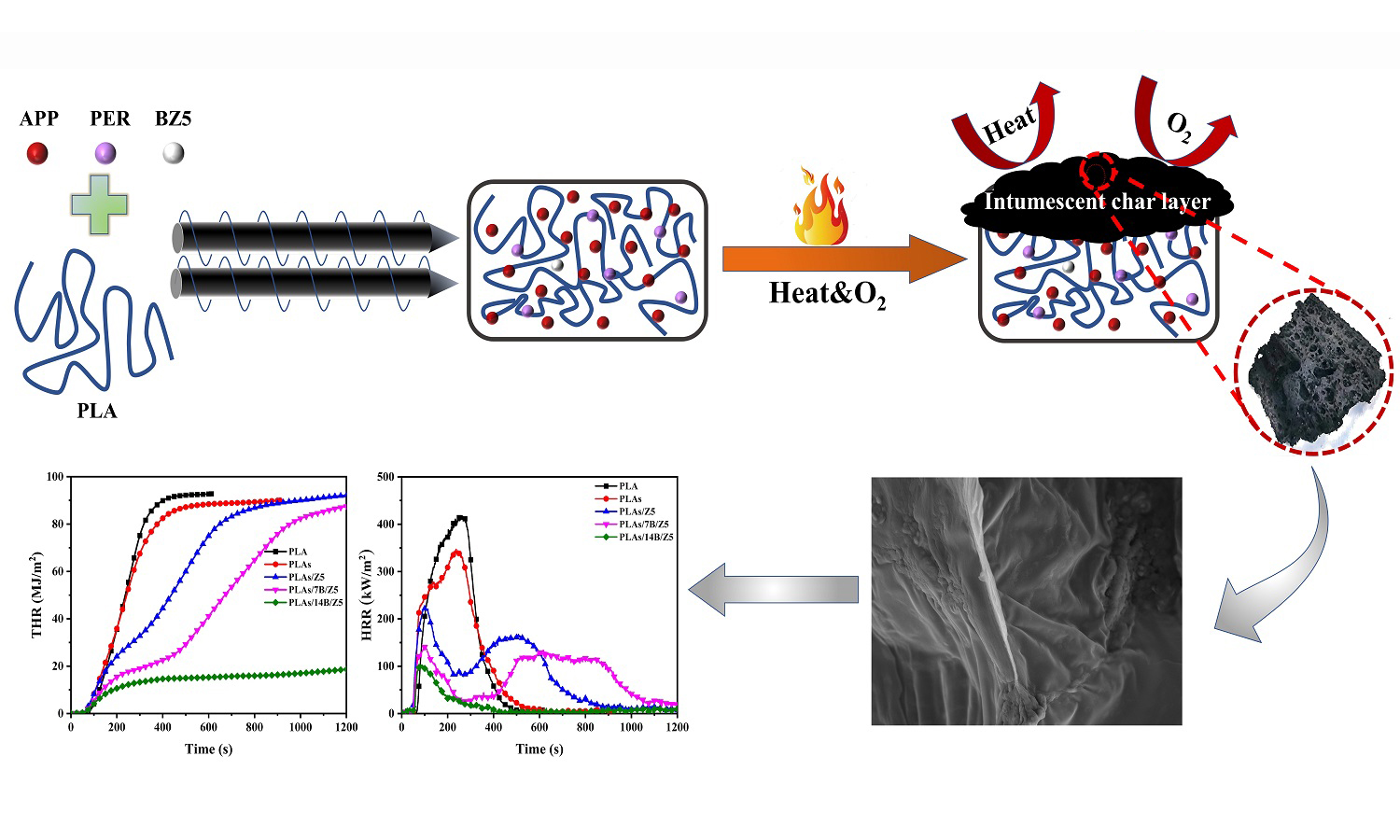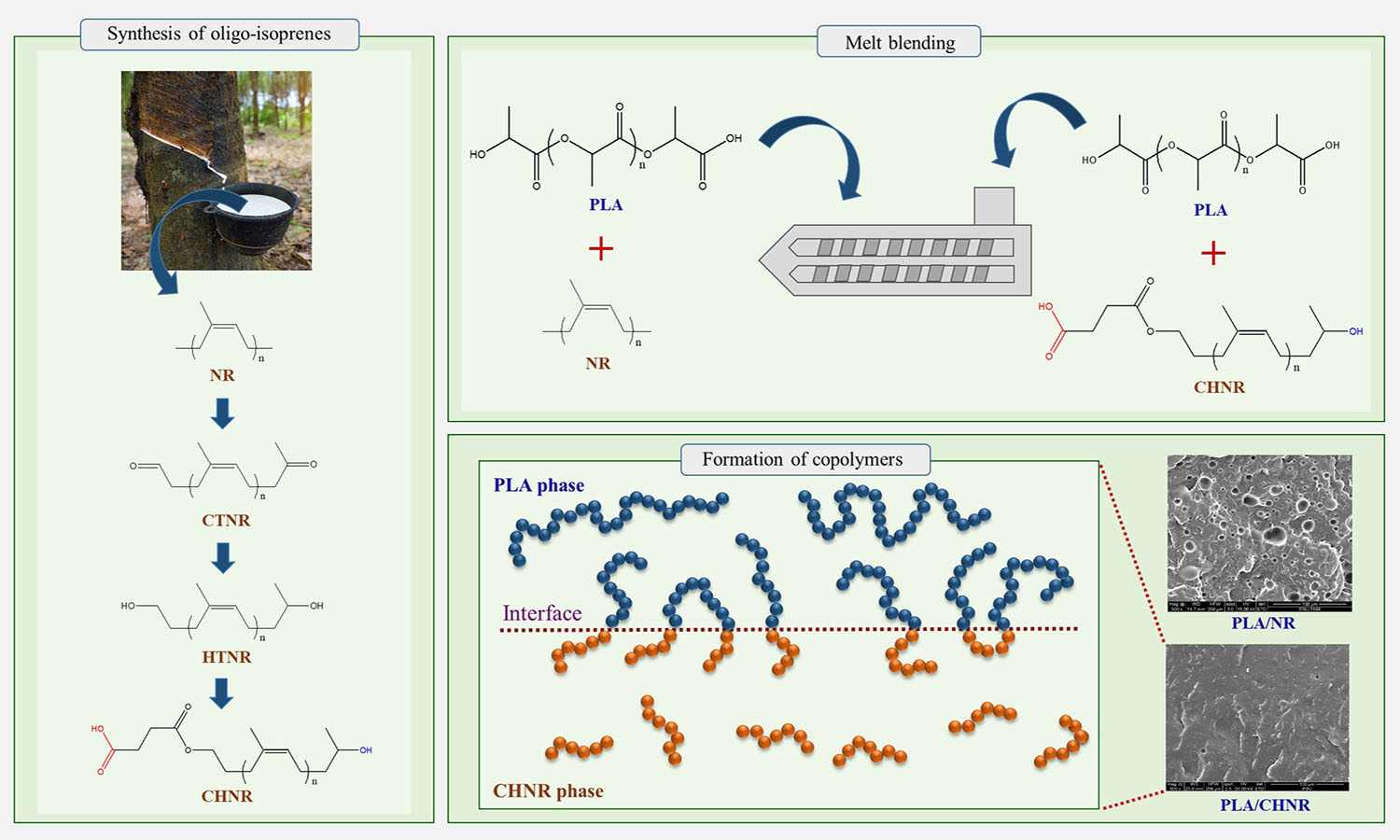Enhanced thermal stability and flame retardancy of PLA through intumescent flame retardant with B-modified ZSM-5 as a synergistic agent
Xiaokun Zhai, Qin Ma, Jing Lu, Yuwei Jin, Ruiyan Zhang, Faliang Luo
Vol. 18., No.3., Pages 326-336, 2024
DOI: 10.3144/expresspolymlett.2024.23
DOI: 10.3144/expresspolymlett.2024.23
GRAPHICAL ABSTRACT

ABSTRACT
In order to improve the inherent flammability of polylactic acid (PLA) and make this new biodegradable material more widely used, B-modified ZSM-5 (B/Z5) was designed as synergistic agent of intumescent flame retardant (IFR), composed of ammonium polyphosphate (APP) and pentaerythritol (PER), and introduced into PLA/IFR (PLAs) to fabricate PLAs/B/Z5 composites by melt extrusion. The flame retardancy, surface morphology, and thermal stability of the composites were investigated by TG, LOI, UL-94, CCT, and SEM. The addition of B/Z5 makes the decomposition temperature of T5% as well as T10% of PLAs reduction in nitrogen atmosphere and carbon layer form in advance. UL-94 test shows the composites reach V-0 rating. LOI value also steadily increases, and the maximum value is 36.0% with B actual loading of 5.26% (recoded as 14B/Z5) in B/Z5. The PHRR decreases by 75% from 417.77 kW/m2 for pure PLA to 103.19 kW/m2 for PLAs/14B/Z5, and THR reduces from 92.78 to 19.26 MJ/m2, which decreases by about 80% and the char yield reaches 50%. This study provides a simple and green method for the preparation of high flame-retardant PLA, which has a broad practical application prospect.
RELATED ARTICLES
Synthesis and characteristics of α-carboxylic, ω-hydroxyl natural rubber toughened poly(lactic acid)
Abdulhakim Masa, Varaporn Tanrattanakul, Ruedee Jaratrotkamjorn
Vol. 17., No.11., Pages 1121-1134, 2023
DOI: 10.3144/expresspolymlett.2023.85
Vol. 17., No.11., Pages 1121-1134, 2023
DOI: 10.3144/expresspolymlett.2023.85

This work presented the synthesis of α-carboxyl, ω-hydroxyl natural rubber (CHNR) for use as an alternative toughening agent for poly(lactic acid) (PLA). The proton nuclear magnetic resonance spectroscopy (1H-NMR) and Fourier transform infrared spectroscopy (FTIR) analyses verified the chemical structure of CHNR consisting of the hydroxyl and carboxyl end groups. The molecular weights of CHNR were set from 5000 to 15 000 g·mol–1 which were determined by gel permeation chromatography (GPC) and 1H-NMR. The PLA and CHNR were prepared by reactive blending using a twinscrew extruder. It was found that the reaction between PLA and CHNR proceeded through transesterification without a catalyst. The formation of copolymer (PLA-co-CHNR) at the interface of PLA and CHNR increased the interfacial adhesion between the two phases. Differential scanning calorimetry (DSC) analysis revealed that CHNR was more compatible with PLA than natural rubber (NR). The compatibilization affected the blend morphology by reducing the interfacial tension. It resulted in a reduction of rubber particle size. The CHNR with a molecular weight of 5000 g·mol–1 showed the greatest improvement in the toughness and ductility of PLA.



